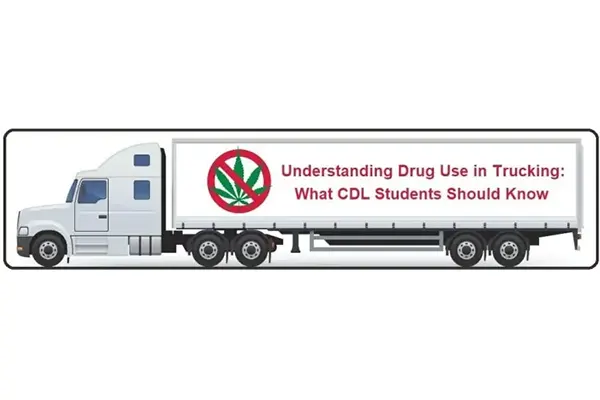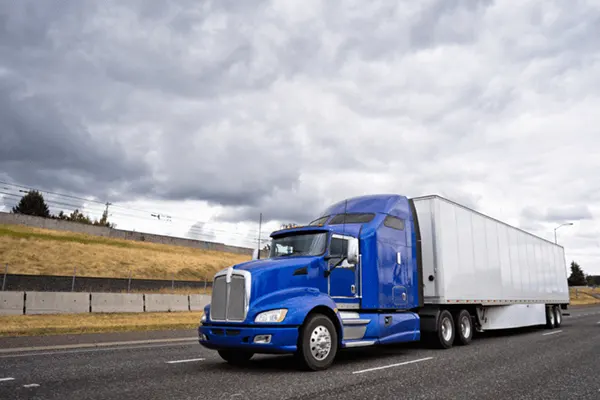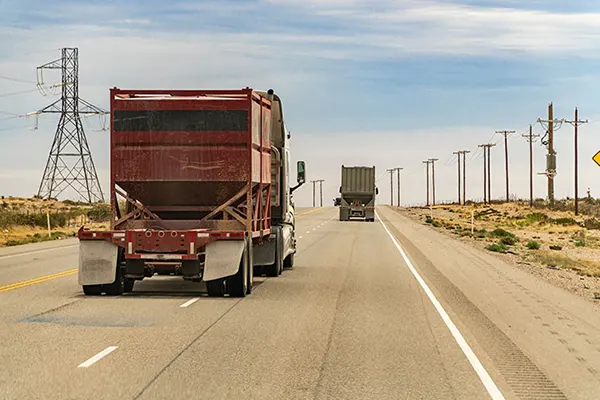
Medical & Recreational Marijuana Use – CDL Students Need to Know
SAGE is providing the following general guidance for applicants and students enrolled in CDL training. This is not considered a professional, medical or legal opinion. Students and applicants must follow applicable legal requirements and the advice of professionals and medical providers.
1. Some states have legalized (or decriminalized) the use of marijuana for medical or recreational use. Does that mean it is OK to use marijuana if I want to attend truck driving school, get my CDL or go into trucking?
NO. Use of marijuana by truck drivers or CDL trainees in any form is prohibited by US Department of Transportation (DOT) regulations. This federal law prohibition is in effect even if your state allows medical or recreational use.
2. Do I need to take a DOT drug test to go to CDL training?>
YES. To operate a commercial motor vehicle like a tractor-trailer, you must take and pass a DOT drug test (under DOT rules, this is called a “pre-employment” drug screen). If your test is “negative” (no prohibited substances are detected), you are able to proceed with training. If you test “positive” (prohibited substances like THC in marijuana are detected) you will NOT be able to proceed with CDL training until you satisfy DOT Substance Abuse Program (SAP) requirements.
3. How is the DOT drug test administered?
You will be directed to an approved local collection site to provide a urine sample. The collection site checks urine for dilution, adulteration, temperature, and other parameters. The collection site checks to ensure that you are providing your own urine, not a sample of someone else’s urine. The sample is then sent to a lab for analysis to determine if you have controlled substances in your system.
4. What if I cannot provide a urine sample?
Drink plenty of fluids before you go for your test so you can provide a sample. You can also drink water while at the collection site. DOT requires that you stay at the collection site for at least 3 hours once you begin the collection process (once you provide a good sample, you can leave). If you leave the collection site within the 3 hour period prior to providing a sample, YOU WILL BE CONSIDERED TO HAVE A POSITIVE RESULT! Make sure you allow enough time to complete the process.
5. What about the use of hemp or Cannabidiol (CBD) products? Are they acceptable?
Some of these products contain THC, the primary psychoactive component in marijuana. Some CBD products contain levels of THC that may classify the substance as marijuana. This can result in a positive DOT drug test result. Since the use of CBD products could lead to a positive drug test result, applicants and students should exercise caution when considering whether to use CBD products.
6. What if I have used a controlled substance such as marijuana recently? Should I take the test?
First, in order to go into trucking, you need to commit to stop using marijuana or other illegal drugs. Don’t get your CDL if you intend to continue drug use. If you have used drugs recently, but have stopped, do not take a DOT test until you allow some time for your body to eliminate traces of the drugs. This could take several weeks. The DOT drug test is very sensitive to concentrations of substances like THC.
7. How will I know if my test is “negative” or “positive”?
Check with your school since the school will receive your test results. If the lab determines that your sample appears to be positive based on the lab analysis, the Medical Review Officer (MRO) will contact you to see if there is any acceptable medical explanation for the result. If there is no explanation, your positive result will be reported to the school by the MRO.
8. What happens if my test result is “positive”?
If your test result is positive you will not be able to continue with CDL training until you complete the DOT approved SAP and the school consents to your enrollment (which is not guaranteed). In addition, your positive result will be reported to the federal Drug and Alcohol Clearinghouse.
9. What is the Drug and Alcohol Clearinghouse?
The clearinghouse is a secure online database managed by FMCSA that gives employers, FMCSA and state agencies information about CDL driver drug and alcohol violations. Federal law requires employers, MROs, SAPs and some others to report violations. It also requires trucking companies to check (or “query”) the Clearinghouse before hiring a truck driver. Some companies may not hire you if you have a positive result in the Clearinghouse.
More information on the Clearinghouse can be found at: https://clearinghouse.fmcsa.dot.gov
10. Can I be required to take a DOT drug test after I am in school?
YES. DOT drug and alcohol testing rules require that truck driving schools also perform “random” tests, so a student in school can be selected to take a test even if they passed a test upon admission to the school. You can also be required to take a “post-accident” test after a vehicle accident. And if the school observes certain behavior that indicates drug use, you can be required to take a “reasonable suspicion” drug test.
11. If I go into trucking, will my new Employer also require a drug test?
YES. Even though you take a test to be admitted into CDL training school, a new trucking employer who you will drive for will require another “pre-employment” drug test. Some companies not only conduct a urine drug screen, but also a “hair follicle” test. Hair follicle tests are even more sensitive than a urine test, and detect substances further back in time. So you can pass a urine test, but fail a hair follicle test.
12. If I test positive, and want to complete a SAP program, what do I do?
The SAP is essentially a drug/alcohol counsellor that is approved by the DOT. Completion of an SAP is required after a positive test if you want to work as a truck driver. The SAP can cost over $500, and is at your expense. The SAP process will involve an initial meeting with the SAP provider, completion of recommended counselling and education, and a follow-up evaluation. Upon completion, the SAP will determine whether the driver successfully completed and can return to a “safety sensitive” duty such as driving. The SAP report is provided to the school. A final “Return to Duty” drug screen will be required by the school. The SAP will normally require subsequent random drug tests to be conducted over the next 12-18 months at your new employer.
When do CDL schools drug test?
For aspiring truck drivers considering a career in the commercial driving industry, understanding the drug testing process is crucial. Commercial Driver’s License (CDL) schools enforce stringent guidelines regarding substance use, in alignment with the regulations set by the United States Department of Transportation (DOT).
Pre-Enrollment Drug Test
The first drug test you’ll encounter is before you even start your CDL training. This pre-enrollment screening is often termed a “pre-employment” drug test under DOT regulations. The test screens for various prohibited substances including THC, which is found in marijuana. A negative result is required to proceed with the training, while a positive result will prevent you from enrolling until certain DOT requirements are met.
Random Drug Tests During Training
Once you are admitted to a CDL school, you’re still not entirely off the hook. Trucking schools are mandated by the DOT to conduct random drug tests throughout the duration of your training. These unannounced tests aim to ensure ongoing compliance with DOT substance abuse regulations.
Reasonable Suspicion Tests
School officials may require a “reasonable suspicion” drug test based on observable behaviors that suggest drug use. This could include erratic behavior, the smell of alcohol or marijuana, or other indications of substance abuse.
Can Truck Drivers Use CBD Oil?
CBD (Cannabidiol) oil has gained popularity for its potential therapeutic benefits, but for truck drivers and other Commercial Driver’s License (CDL) holders, the use of CBD oil can present a complex, and potentially risky, landscape to navigate. While some may argue that CBD oil does not produce psychoactive effects, the risks of failing a drug test remain a significant concern. Below is a detailed exploration of this issue.
The Legality of CBD
CBD oil itself is legal in many U.S. states, and it’s often advertised as a health supplement. Some users consume it to treat conditions like anxiety, insomnia, or chronic pain. However, the legality of CBD doesn’t necessarily make it acceptable for use by CDL holders under federal law.
The Role of THC
One of the primary concerns about using CBD oil is the presence of THC (tetrahydrocannabinol), the psychoactive component found in cannabis. Even trace amounts of THC in CBD products can lead to a positive result on a Department of Transportation (DOT) drug test. In the trucking industry, a positive drug test can lead to immediate disqualification from driving and other professional consequences.
Federal Regulations
According to DOT guidelines, the use of any substance or medication that contains THC is prohibited for truck drivers. That prohibition remains whether the THC comes from marijuana or from a hemp-derived product like CBD oil. Importantly, a “safety-sensitive” employee subject to drug testing under DOT regulations can’t use CBD as an excuse for a positive drug test result.
The Risk of Inconsistent Products
It’s essential to note that the CBD industry is still relatively unregulated. Product quality and THC concentration can vary widely among different brands and batches. Even if a CBD oil product claims to be THC-free, there’s no guarantee it won’t contain enough THC to trigger a positive drug test result.
Employer Policies
Even if CBD oil is legal in your state and you’re using it for legitimate therapeutic reasons, employers may have their own policies against its use. Trucking companies often enforce stringent drug policies that go beyond federal laws, and you could be putting your job at risk by using CBD.
The Drug and Alcohol Clearinghouse
A positive drug test will not only affect your current employment but will also be reported to the federal Drug and Alcohol Clearinghouse, impacting your future employability in the trucking industry.
Here are some additional things to consider when deciding whether or not to use CBD oil as a truck driver:
- The type of CBD product you are using. Some products, such as CBD isolate, are more likely to be free of THC than others.
- The dosage of CBD you are taking. A lower dose is less likely to cause side effects.
- Your individual reaction to CBD. Some people are more sensitive to the drug than others.
- Your overall health and medical history. If you have any health conditions, talk to your doctor before using CBD.
Disclaimer: The information in this article is based on the data available as of its writing and is meant to inform and guide prospective CDL trainees. For the most current information and specifics about CDL training programs, please contact SAGE Truck Driving Schools directly.
Please fill out the information below and our team will reach out to chat about your options.


